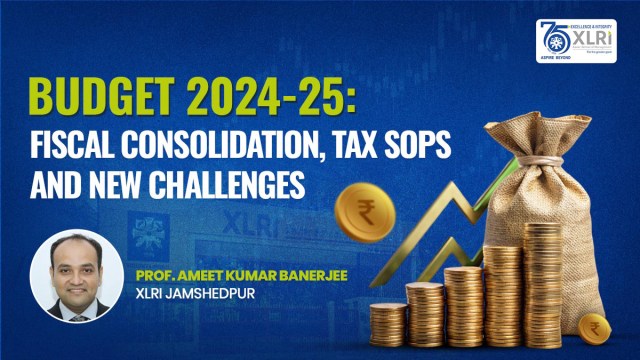Budget 2024-25: Fiscal consolidation, tax sops and new challenges
The FM significantly changed capital gain taxes to reduce the tax burden on real estate sales. However, the change poses a dual challenge for individuals engaging in real estate transactions.
 Budget 2024-25
Budget 2024-25Finance Minister Nirmala Sitharaman announced the Union Budget 2024-25 on July 23 under the shadow of growing global and political uncertainties, which could potentially disturb economic growth. The Budget made provisions for the agriculture sector, financial support for the MSME segment, infrastructural development, freebies for angels, changes to the income tax slab, capital gains taxes, and to curb the fiscal deficit. On the flip side, the progress of the budget presentation and the announcement of the FM about the changes in long-term capital gains (LTCG) spooked the financial markets, with major benchmarks taking a nosedive, signaling the sensitivity of the Budget outcomes and the aftermaths for investors and the markets, especially the real estate markets.
The FM significantly changed capital gain taxes to reduce the tax burden on real estate sales. However, the change poses a dual challenge for individuals engaging in real estate transactions. First, with the elimination of indexation benefits, the incidence of the tax burden will be higher, especially in metros and tier 1 cities, which are currently witnessing a growth spree after the pandemic period. Second, although the LTCG on property sales is reduced from 20% to 12.5%, it will majorly benefit cities with flat property prices. Thus, the benefits that were accrued to property owners to adjust their purchase prices for inflation, in turn, reduce taxable profits will take a big hit.
Now, coming to the buyback of shares, the investors will be taxed accordingly to dividend payments, increasing the tax burden on the investors. Hitherto, after the amendment, the investors in higher tax slabs will carry a higher tax burden and need to shell out more tax; subsequently, the markets will see fewer buybacks from the industry since its inception for listed companies in 2019.
The government took a stance to consolidate on the fiscal deficit front and take austere measures to trim the fiscal deficit target for FY25 to 4.9% of GDP against the 5.1% target stated during the interim Budget in February. The road ahead largely depends on the net direct and indirect tax collections. Though the direct tax collections are inspiring, the GST collection, which stood at Rs. 1.74 trillion in June 2024, signals slow growth to 7.7%, notably less than the 12.4% and 10% increase recorded in April and May, respectively, and if the collection falls in 2nd and 3rd quarter will impact both on the borrowings from debt market and managing fiscal deficit which the government is planning to reduce the fiscal deficit to 4.5% or less by FY26 and the other side is the already existing burgeoning debt and the new target to raise 14.01 lakh crore borrowing marginal lesser than the interim budget figure will see changes in dynamics borrowings with falling net tax incomes causing additional burden. Further, the Budget remained practically silent about the discourse on disinvestment.
The other task will be managing inflation, which is relatively stable. Still, the precious bouts of inflation resulted from the pass-through of rising crude oil prices and appreciating dollars caused by the geopolitical conditions. Given the global instability and geopolitical conditions, reigning inflation looks somewhat challenging due to the country’s dependence on oil imports and seasonal volatility in Agri-commodity production. Though the Budget had a broader outlook toward growth, and some of the states have received a lot of attention in the current Budget, becoming the third largest economy will require identifying states that will take the onus of becoming $1 trillion in itself down the line which will demand strong fiscal consolidation among the states and creating an ecosystem that breeds the potential for industrial growth and financial support both from the state and the center, and it is only time to unfold.
By Prof. Ameet Kumar Banerjee, XLRI Jamshedpur
Disclaimer:
This content is sponsored and does not reflect the views or opinions of IE Online Media Services Pvt Ltd. No journalist is involved in creating sponsored material and it does not imply any endorsement whatsoever by the editorial team. IE Online Media Services takes no responsibility for the content that appears in sponsored articles and consequences thereof, directly, indirectly or in any manner. Viewer discretion is advised.
Photos




- 01
- 02
- 03
- 04
- 05


























